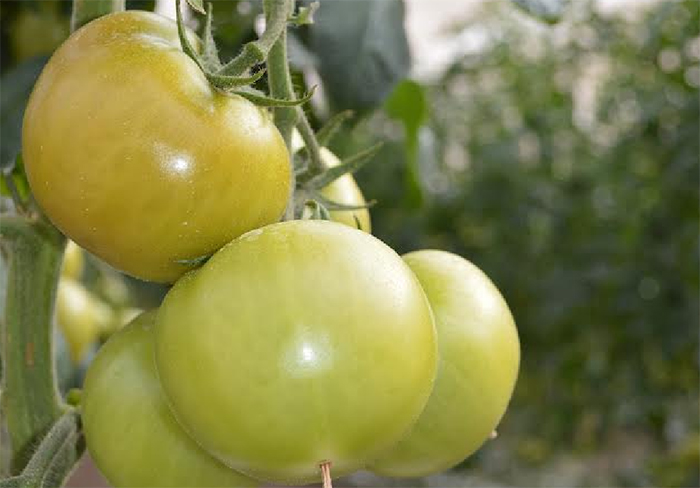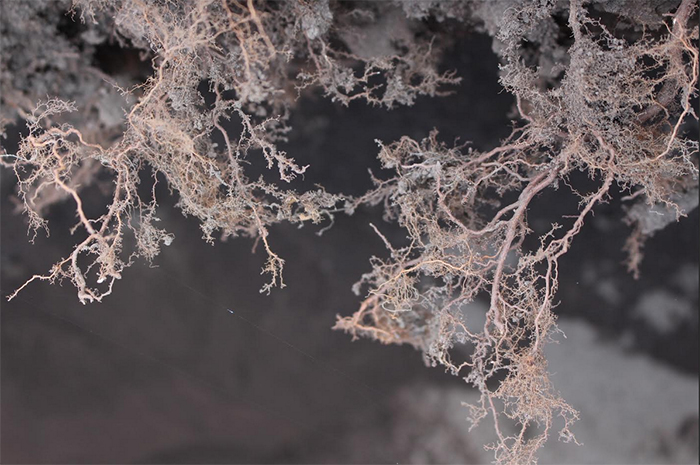Muscle development, strengthening the immune system and recovery of fatty tissue. These are some effects that hydrolyzed proteins have on humans that have risen their popularity on nutrition and food product sites all over the web. These are proteins from an animal source —such as meat and milk— or from a vegetable source, that after passing through a hydrolysis process gets separated into their basic components. This way, hydrolyzed protein is more digestible by people, allowing better assimilation, facilitating its benefits in the body.
Its nutritional qualities have made hydrolyzed proteins a source of relevant compounds at the farms, especially to feed animals. However, in the last decade there has been an increasing interest in their application as plant biostimulants, especially for their ability to reduce the negative impact of environmental conditions, such as droughts, salinity or low availability of nutrients, which generate in plants what is known as "abiotic stress".
This is one of the lines of research of the Italian academic Giuseppe Colla, from the Università degli Studi della Tuscia, in the Italian city of Viterbo. The academic has focused on understanding the way that hydrolyzed proteins (HP) from vegetable sources act on crops, in order to facilitate the development of new products based on vegetal biomass.
The effects of peptides and amino acids
As it’s explained by Colla et al. ("Bioestimulant action of protein hydrolysates: unraveling their effects on plant physiology and microbiome", 2017, www.frontiersin.org), through a partial hydrolysis procedure, which can be chemical or enzymatic, proteins are broken into their basic components: polypeptides, oligopeptides, and amino acids. From them, different mixtures are made and commercialized as liquid extracts or soluble powders in granular form, which can be applied next to the roots or foliarly.
These hydrolyzed proteins (HP) can be obtained from a wide variety of animal waste and vegetal biomass, such as leather subproducts, blood meal, fish processing, fowls, dairy, legume seeds, alfalfa hay, corn wet milling, and a long etcetera. Although today most of the supply of hydrolyzed proteins comes from animal origin, the ones from vegetable sources are being increasingly valued "because they represent a sustainable, economical and environmentally friendly solution for the disposal of waste", according to Colla and his co-authors in one of his studies.
"Although today most of the supply of hydrolyzed proteins comes from animal origin, the ones from vegetable sources are being increasingly valued because they represent a sustainable, economical and environmentally friendly solution for the disposal of waste"
Giuseppe Colla, researcher at the Università degli Studi della Tuscia
Most of the HP manufacturers oriented to the agricultural sector are located in Italy, Spain, the USA, China and India. A good part of these companies are related to the leather and the meat industry, inspired by the idea of valorizing subproducts by turning them into biostimulants and fertilizers. However, in the last years different companies have introduced HP from vegetable origin in the North American, European and Asian markets, where they have gained acceptance among farmers because of their wealth of bioactive compounds and good results in crops.
In a presentation by Giuseppe Colla during the World Congress of Biostimulants, the academic highlighted the tolerance that hydrolyzed proteins generate against abiotic stresses, thanks to their action as antioxidants and osmoprotectants (defense against dehydration). Additionally, he said, they are capable of increasing the availability and efficiency of nutrient use due to the ability of peptides and amino acids to form complexes with these elements, and that way they can easily get into the plants.
Its positive biostimulant effects proceeds mainly from these peptides and amino acids, which play an important role in biosynthesis and in the catabolic reactions associated to the production of energy, which the plants cells need for their processes (metabolism), adds Colla.
Also, they improve the characteristics from the crops and modulate their growth and development, acting as "signaling compounds" that help the cells to react to their own changes or to the ones from their environment.
In fact, nowadays the biostimulant activity of HP is mainly attributed to signaling peptides, whose short chains from two to 50 amino acids in specific sequences make them biologically active at very low concentrations. "This is very important because biostimulants in general are applied in very low doses at the farms," emphasizes the specialist. "We are talking about a few liters per hectare."
In the genome of plants, scientists have identified hundreds of peptides with hormonal action. Many of them are involved in the control of plant development, growth, flowering, nutrition and adaptation to the environment, including both biotic and abiotic stresses.
The mentioned promotion of the availability of nutrients and their absorption by plants derives from the ability of certain peptides to form biochelates with cations, negatively charged mineral elements. This attribute stands out in vegetal-derived peptides, rich in amino acids that contain glutamic acid and aspartic acid.
Searching for the right biomass
The proteome, that is the complete group of proteins made by an organism, is already known in different crops. As a result, search databases and software can be used to predict the type of peptides that can be obtained from a specific protein source using specific enzymes. These advances are used in the works led by Giuseppe Colla.
The researcher raised several criteria to choose a vegetal biomass as a source of proteins: it should be considered that it has a high content of proteins, of good quality. Also it should be easy to find and easy to handle, as well as to store, and obviously low cost.
Through the PHoBOS project, sponsored by the Italian Ministry of Education, University and Research, Giuseppe Colla and his team are looking to develop new hydrolyzed proteins, based on vegetal sources, to create original and functional biostimulants, especially in order to increase tolerance to salinity and efficiency of nitrogen use.
In that context, they perform the enzymatic production of HP from different vegetal biomasses. Then they characterize the resulting formulations and test their activity by hormonal type using simple bioassays. This way, they test their ability to improve morpho-physiological characteristics using model crops, such as lettuce and tomato, under nitrogen limitations and salinity conditions.
 The tomato is being used as a model to test the effect of hydrolyzed proteins on morpho-physiological characteristics of plants.
The tomato is being used as a model to test the effect of hydrolyzed proteins on morpho-physiological characteristics of plants.
The most successful HPs are divided into different molecular size classes: only amino acids are in the smallest classes, short-chain peptides in the medium classes, and bigger peptides in the larger classes. This division makes it possible to identify which type of HP is the most active and also makes it possible to deliver information to the industry to optimize manufacturing processes.
Through different methodologies –including bioassays, metabolomic analysis, phenotyping platforms, high-throughput sequencing, measurement of RGB values, chlorophyll fluorescence parameters, photochemical performance, leaf tissue analysis, and agronomic assays–, hydrolyzed proteins have been evaluated, obtained from various sources, in aspects such as:
-Auxin-like action, linked to potential applications for root growth, flowering and fruit set.
-Gibberellin-like action, associated with seed germination, fruit development, stem elongation and sprouting
-Action-like cytokinins, related to the development of sprouts and fruits, reduction of senescence and resistance to abiotic stresses.
-Effects on other phytohormones.
-Classification of hydrolyzed proteins as promoters or inhibitors of plant growth, and/or stress mitigators.
-Effects on secondary metabolites, compounds that intervene in the relationship of the plant with its environment.
-Response to salinity conditions.
-Behavior against different nitrogen availabilities.
Laboratory evidence and agronomic tests
The results obtained by Colla have shown that hydrolyzed proteins of vegetable origin frequently exhibit auxin-like activity. Less frequently, gibberellin-like and cytokinin-like activity are also found.
 The auxin-type action is related to root growth, as well as intervening in flowering and fruit set.
The auxin-type action is related to root growth, as well as intervening in flowering and fruit set.
Treatments with hydrolyzed proteins activate transcription factors involved in the auxin response and provoke reprogramming on the metabolism of plants. Transcription factors activate or deactivate the expression of genes present in plants, causing different responses.
The methods used by the laboratory have demonstrated their efficiency in detecting differences in biostimulant activity between HPs. Agronomic trials, meanwhile, have allowed to validate the biostimulant effects of selected HP in different real production conditions and to identify additional advantages.
Some examples of the specific results obtained in different tests:
-HP formulations caused an increase in tomato roots similar to the application of indoleacetic acid (a type of auxin).
-Root tissues analysis indicated increases in compounds related to auxins, gibberellins and cytokinins, demonstrating that HPs are capable of modulating the hormonal balance in the root system. Different HP gave different results.
-Under salinity conditions in lettuce some HP (named as H and P) acted as growth promoters and stress mitigators, while another (named B) turned out to be growth inhibitor.
-A comparison of the hydrolyzed proteins H and B shows, for example, that the first promotes the accumulation of secondary metabolites while the second reacts in the opposite direction. The most affected secondary metabolites were phenolic propanoids and terpene. Under saline stress, the plants accumulated compounds with nitrogen content, in response to the application of both HP, but the mitigation was much more visible in response to treatment H. There was a strong decrease in brassinosteroids with treatment B, but not with H, which, on the other hand, led to an accumulation of cytokinins and notorious decrease in the ACC precursor of ethylene.
-The weekly foliar application of HP to lettuces, both with low nitrogen levels and with optimal levels, increased the absorption of potassium, sulfur, calcium and magnesium. This way, the antioxidant content improved: beta-carotene, lutein and phenolic compounds.


 The tomato is being used as a model to test the effect of hydrolyzed proteins on morpho-physiological characteristics of plants.
The tomato is being used as a model to test the effect of hydrolyzed proteins on morpho-physiological characteristics of plants. The auxin-type action is related to root growth, as well as intervening in flowering and fruit set.
The auxin-type action is related to root growth, as well as intervening in flowering and fruit set.